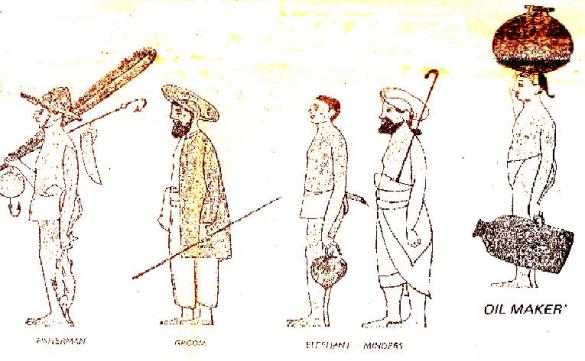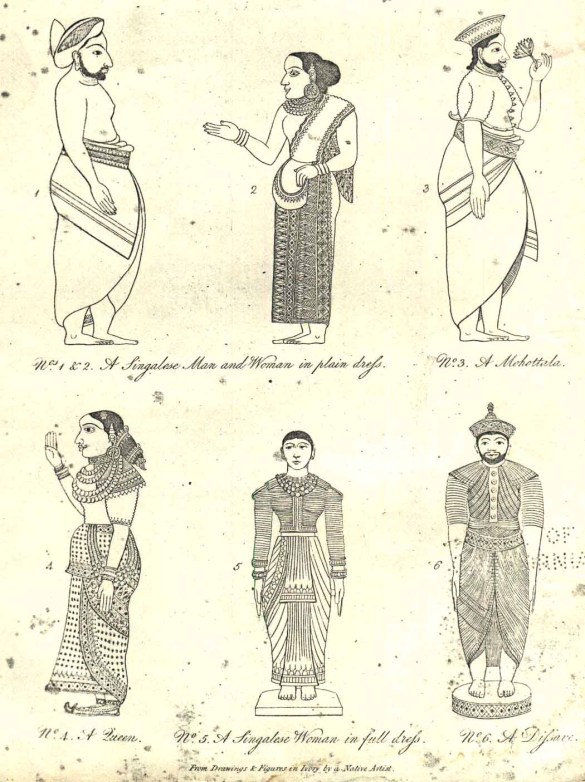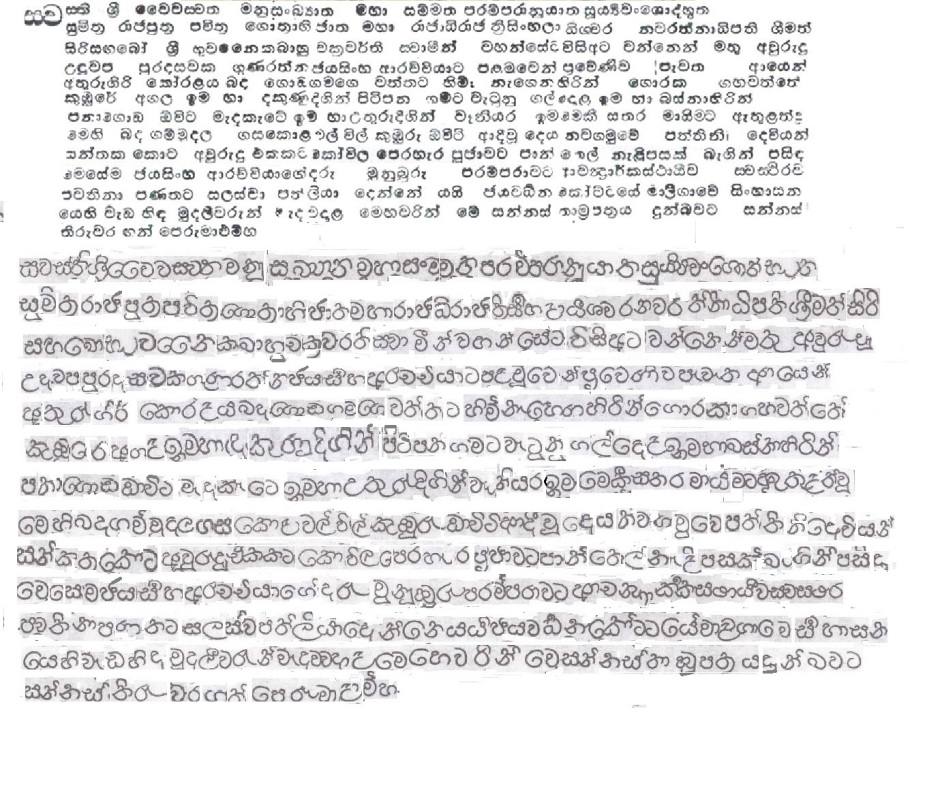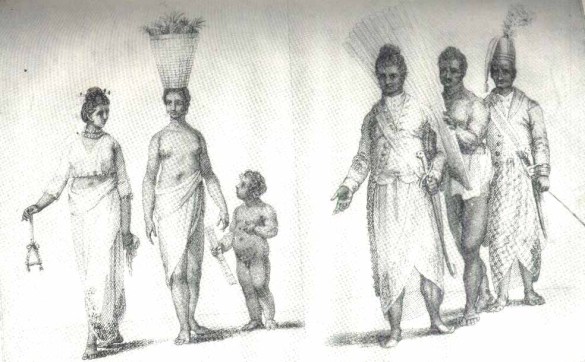The selection of the Name of Prince Siddhattha
“Eight Brahmin scholars to read the future of Baby born to Queen Mayadevi . All gave a dual prediction that the baby would either become a great king or a great holy man. Kaundinya(Pali: Kondañña), the youngest, and later to be the first arahat other than the Buddha, was reputed to be the only one who unequivocally predicted that Siddhartha would become a Buddha. The infant was given the name Siddhartha (Pāli: Siddhattha), meaning “he who achieves his aim”.
DR KD PARANAVITANE- lAND FOR MONEY
Part I – Ancient Sinhala names.
Part II- Mediveal Sinhalese Names
Part III- Sinhalese names of Kotte Period onwards.
Part III.
This is to share a wonderful information of the names of the Sinhalese written by Dr KD Paranavitane, the Former President of the Royal Asiatic Society Sri Lanka . Dr Paranavitane wrting will enlighten most of us Sinhalese on how and why we were named.
The Sinhalese personal names appearing in the tombos or land deeds of the Dutch were researched by Dr Paranavitane . He states that they are generally derived from the name of the father or ancestors. They generally consisted of three distinct parts,
1.It has been a tradition of Sinhalese to be named after Initials selected from the Sinhala alphabet after reading the Horoscope. After referring to the place to planets ,the sun and moon etc at the time of birth. The initials are selected and the pparent of the child select a name with these initails. At the time I was born, the letter Ba was most appropriate and I was named Bandhusiri.The name be given when the child was fed with rice for the first time, referred to as bat-kavapu nama or indul katageme nonut [ Nekath] which corresponds to the name given at the baptism that was inherited from the colonial European administrators.
 Few names mentioned by Dr Paranavitane are given below
Few names mentioned by Dr Paranavitane are given below
Males ……………………………………………. Females
Aderaya (loving one) ……………….. Aloka (bright one)
Baliya (quiet one) …………………… Amandoe (sweet one)
Batama– (babyish one) . Batiya(babyish one)Baba
Bayya (timid one) ….. Belindu (babyish one)
Kaloe (black one) ……………………….. Ehelemalie (esala flower)
Kekkula (buddy) ……………………Inderie (goddess)
Kiria (milky one) …………………..Kekkulie (buddy)
Lamittera (childish one) ………….Kirimalie (milky flower)
Oongiya (youngest one) ………….Lamie(childish one)
Nandoea (pleasing one) ……………..Nilloe(blue one)
Pina (meritorious one) ……………Pin-kella (fortunate girl)
Samattuwa (clever one) ……….. Poospie (flower like one)
Setuwa (lucky one) ………………… Rannie (goldish one)
Sielinda (smooth one) …………….. Sedara (energetic one)
Sobena (beautiful one) …………. Seka (intelligent one)
Teyya (god’s one) ……………….. Setoo (lucky one)
Tikira(little one) …………………….. Silindu (smooth one)
Wastuwa (wealth) ……………………. Sirimalie (little flower).
Ran[Golden colour]
Dingiri Bala Ukku Hiralu Kombi-hami, Lat-etana, Mutu-Menike., Lasandu Menika,
Some names of the Kandyan provinces taken from the Gazetteer of the Central Province of Ceylon Volume I. The list of witnesses of Uda walave Adikaram Nilame of Aluvihare‘s deed to his eldest son in 1817 AD- Kiribanda Duggane Rala were Aluvihare Gangala Rala, Halgahawatte Rala, Silippu Punchirala, Kalu Banda, Ved Naide, Kirei Henaya, Harasgama Vedarala, Agalawatte Ella Duraya, Tantrige Kaluwajja, and Seyiyadu Gurunneha.
The lands at Ampitiya was transferred to the Godammune family by Wekoadega Kiri naidu in 1806 . Few who acted as witness were Godamunne Sakalasuri Mudiyansalage,Kawrala,Hewaduraya, Ran Hawadiya, Lathawadiya Duraya, Sinduwa Duraya.
What Dr Paranavitane states under is still been practiced. Some names off a Thombu of a paddy field giving to me by Mr Wijesinghe on a Paddy field at Udugamploa now belonging to Munasin Ahchi Lekamlage family at Weediyawatte.
“Another remarkable factor is that the Sinhalese names of the Goigama caste preferred to use the names combining with Loku(eldest), Madduma (middle) and Kuda (small) or Poentje ( Punchi or small) with personal name such as Appoe (gentleman) and Hamie.Females frequently used Ettena in combination with particular complexion such as KaIu and Ran with the name Hamie. The distinction between class and caste is one of the barriers which divided the nobleman from the ordinary people. The people of Goi-vanse or Goigama or Handuruwodescended down from long line of ancestry constituted the native nobility.
The ancient tradition of addressing ladies of distinction as himiba, Himibi or Himobi and Gentleman or Lords or Sir as Himi, Himiya seems to be modified here.
56 Dr Paranvitane states that ‘The honorific term deva swamin wahanse usually applied to the King at a later period it has been modified to address the nobility as Hamie which was added to the personal name. The term Swami or Himiya also means ‘Lord’. This is being used as Hamuduruwo which is a derivation of Sanskrit word ‘Swami‘ .
Male …………………………………………………..Female
,,,,,,,,,,,,,,Age ,,,,,,,,,,,,,,,,,,,,,,,,,,,,,,,,,,,,,,,,,,,,,,,,,,,,,,,,,,,,,,,Age
1 -20,,,,,,,,,, 21-40,,,,,,,,, 41-60 ,,,,,,,,,,,1-20 ,,,,,,,,,,,,20 -40 ,,,,,,41-60
lokoe + ,,,Appoe ,,,,,+Hamie ,,,,,,,,,Kaloe ,,,,,,+ Ettena ,,,,+ Hamie
Madduma + Appoe+Hamie……. Natjera ..+ Hamie
Poentje ..+ Appoe,+Hamie ……..Guna ….+ Hamie
Dingie + Appoe…+Hamie ………Anagi . + Hamie
Kirie ..+ Appoe.. +Hamie………. Kirie + Ettana….. +Hamie
Bindoe + Appoe + Hamie……….Poentje +Ettena
Nainde + Appoe + Hamie………Meniek +Hamie
Siriwadie + Appoe + Hamie ,,,,,,Loku + Ettena
Kaloe + Appoe ,,,,+ Hamie ,,,,,,,,,Ran + Ettena.
Dr Paranvitane writes.
There were certain terms used by the Sinhalese to address ladies of distinction such as Hamuduruwa, Hamu,Mahatmayo, Ettani, Ettana and Inmateni. The ladies who enjoyed a little inferior social status were addressed by the words Hamie and Hamine. These two terms were also used to address the wives of Mohandirams or Appuhamis and to the unmarried daughters of Mudaliyars. Arachchy’s wife was addressed as lamahami whereas the word Mahage was used to address Kangafl!’s, Vidane’s or Mayoraal wife. The suffix Hamie was an honorary designation to a female of a respectable family of Govi caste. It was sometimes assumed that the females of the same standing in the society as the males in the case of the last mentioned, particularly in the southern coastal region. Apart from the above terms of addresses, the other castes too had similar addresses to females such as Natjre or Natie found in the tombos. The prefixes including loku, madduma, and poentie very often conveyed the respective ages of children. The word baba (baby) was a preferable alternative to poentje or ‘little one'[ Punchi]. All these pre and suffixes were meaningfully used to distinguish the correct individual. The application or termination of additional names depended very much on the individuals social status especially the honorific ending with vowels subject to change, like
Corneli s>Kornelisa, Janis>Janisa.
Male ,,,,,,,,,,,,,,,, ,Female
Nainde ,,,,,,,,,,,, Natjere
Hattan + Nainde ….. .Aroema + Natjere
Dingie + Nainde …… .Kiri + Natjere
Dentre + Nainde ……. Aloka + Nadere
Nainde + Hamie ……. Dinapele + Nadere
Nainde + Appoe……. Seke + Natjere
Baba + Nainde ……… Seele + Nadere
Lokoe + Nainde …… .Natto + Natjer
Lama + Natjere Anada + Natjere
A mixture of Portuguese Dutch and native names occasionally come across in the Dutch tombos such as,Kannagere Koralage Don Joan (male)
Dona Ettena Hamie
Dona Marie Hamie
Dona Anna Hamie
Certain names given at the baptism by the Portuguese disappeared in the Dutch tombo and some recorded as Dutch version of the name
|
Portuguese
|
Dutch
|
|
Dom Juan
|
Jan, Jaan
|
|
Dom Jeronimo
|
[disappeared]
|
|
Simao
|
Simons
|
The following names given by the Portuguese to Sinhala were hardly used in the Dutch tombos.
Alahendra Cabral
Almeida Caldera
Amadoru Dabarera
Andradi Kurera
Britto Pigera
According To Dr Paranavitane The names of the Portuguese origin have been in vogue at the time of the compilation of tombos.These as he states are
Alwis Mendis
Boteju Pasquel
Cooray Perera
Corea Pieris
Pinto Costa
Salgado Dabare
Silva Fonseka
Mel Soysa
The simplification of the Portuguese or Dutch names was common among the so called lower castes of inhabitants
Adriana (Dutch: Aadriana)
Anika (Dutch: Annake)
Anthona (Poturguese: Anthonao)
Bastiano (Dutch: Bastiaan)
Doeminga (Porruguese: Domingu)
Ederia (Dutch: Aadriaan)
Jantje (Dutch: Jan)
Raphia (Portuguese:Raphael)
Sendirikkuwa (Dutch: Hendrik)
Thomenikkoewa (Pornrguese:Dominik)
Thomisa (Dutch: Thomas)
The officer or the men of higher stature specialty of Karawe and Salagamo castes acquired European name as they were closer to the administrators.
Male Female
Cornelis Anna
Dines Aadrianna
Jacob Cathirina
Mighiei Christina
Pedro Disiana
Pieter Soesanna
There are a considerable number of names recorded in the tombos due to ignorance of the proper pronunciation of native names. viz.
Johanpatatchige Naijnda Hamie
Karokoranage Wrje Appu Nainda
2- Wasgama,Varige nama, or Ge-nama, which is the family name which corresponds to Christian name or Surname, used and written before the Christian name.This is a tradition perhaps from the Anuradhapura period where donors of caves identified them selves to a Villages or district or to a trade etc. This practice was followed in the Sigiriya poets who identified them self in a similar manner. Example ‘Vanije Kiyula Gi‘ [ Poem No 24] the Poem of Kitula the trader or ‘Ledaru Budal Mi’ – I am Budal the Writer herein the 14 Cent AD, it is Liyanage or Lekam.[Dhammika Parakrama Waidiyaratne].
The list of Dr Paranavitane is shown below dividing the ge names into differ3nt trades.
.
|
Name |
House |
Service Performed |
|
Acharige |
Of Blacksmith |
-must make the agricultural and other iron utensils for the villagers and for the Company
|
|
Arachchige |
Of the head of security |
-Must Look after the security of the village
|
|
Badehelage |
Of Potters |
must supply earthernware to the Company |
|
Badalge |
Of Silversmith |
-must make the gold and silver articles the Company requires
|
|
Berawage |
Of the Drummers |
-apart from drumming they have to Attend the elephant hunt where extensive drumming is required
|
|
– House of the Village chief |
||
|
Guruge |
-House of the Teacher |
Teaching in the school and maintaining the school tombo |
|
Hewage |
House of the Soldier |
Carry letters from one post to other |
|
Hunuge |
House of the Lime Burner |
-must supply lime to the Company |
|
Ilandarige |
House of the Messenger |
-carry messages and serve as cooly |
|
Kinnrage |
House of the MatWeaver |
supply necessary mats for the Company |
|
Liyanege/Lekamge |
House of the writer |
To keep the records |
|
Maliamge |
House of the Sailor |
help to navigate ships ,recover lost anchors
|
|
Manage |
House of the Grain-Measurer |
-measuring grain in the harvest |
|
Mannange |
House of the Grain-Measurer |
-as above |
|
Marakkalage |
House of the Sailor |
-must supply fish to the Governor’s table and to the Company |
|
Nanayakkralage |
Nobleman |
|
| Paindakarage |
House of the Messenger |
-must carry messages |
| Pilliyaguruge |
School Master |
-teaching and keeping school tombo |
| Pannikkige |
The Barber |
|
| Pathirage |
House of the Accountant
|
-must keep grain accounts |
| Radage |
House of the Washerman |
Must wash company’s caocoes. |
| Vitharanege |
House of the Inquirer |
judicial inquiries settle minor disputes
|
| Wadu-mestrige |
House of the Chief Carpenter |
-similar to carpenter
|
| Waduge |
House of the carpenter |
work for the carpentry and the wharf |
3- Patabendi nama, or honour-giving name awarded when the head of the family advanced in official status in the Sinhala kingdom or subsequently by the Portuguese and the Dutch regimes.
The third part of the name Patabendi nama, literally ‘frontlet ‘was conferred to a person either by the Sinhalese King or by or Portuguese or the Dutch Governor in appreciation of the recipient’s remarkable service or brave deed. The term patabendi was very often used by the Sinhala Kings when they awarded honorific title to native chief along with an head
Ornament or Front-let. Award of these titles was taxed and contributed considerably to the revenue of the State.
Abayakoon (fearless chief) . Jayasekara(highest of the victorious)
Abayaratna( Gem of the fearless) Manamperi (Great hearted)
Ekanayaka (un-rivelled chief) Navaratna (nine gems)
Illangakoon (King of the Island) Rajapakse (loyal to .king)
Jayasingha(victorious lion) Seneviratna(victorious commander)
Jayawardhana (victory increaser) Wijeratna (victorious gem)
Jayasuriya (sun of victory) Wikramasinghe (victorious lion)
Guna ratne ( Good? Gems)
THE NAME GUNARATNA JAYASINGHE.
This was during the period when Aturugiriya Korale was in existence before the Battle of Mulleriyava.
During the Dutch period this land had to be registered in Tomboos. and there was a requirement for a Christian name for this purpose.They would not register land unless there was a Christian name. The Jayasinghe[ the present Village of Godagama is full of jayasinghe’s] took the name Alvis, and now my grand father was a Aranolis Alvis jayasinghe. Aronolis is German name.
A comment by a reader
I’m sorry, but many Portuguese names here are misspelled: Dom João (not Dom Juan); Dom Jerônimo; Simão; Alexandre (?) (Alahendra), Caldeira; Amador; D’Abreu (Dabarera); Andrade; Correia (Kurera); Figueira (Pigera); Alves. Adriana is a Portuguese female name; Anic(k)a can be diminutive for Ana; Antonio (Anthonao); Sebastião, Bastião or Bastiano are Portuguese; Domingas or Dominga (Doeminga); Rafael (Raphael); Domingos or Domingo (Dominik); Thomas or Tomás is also portuguese.
Emerson








